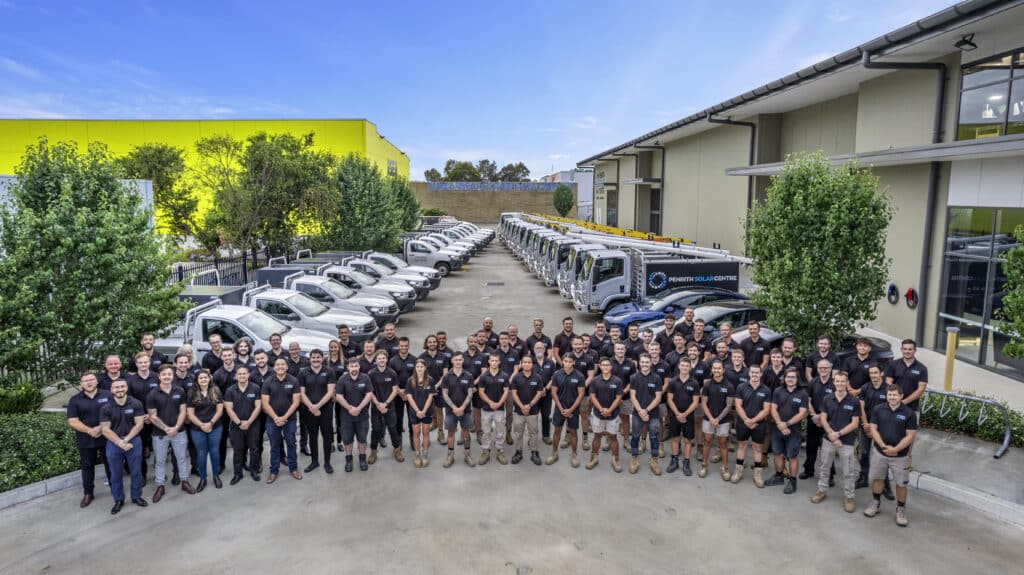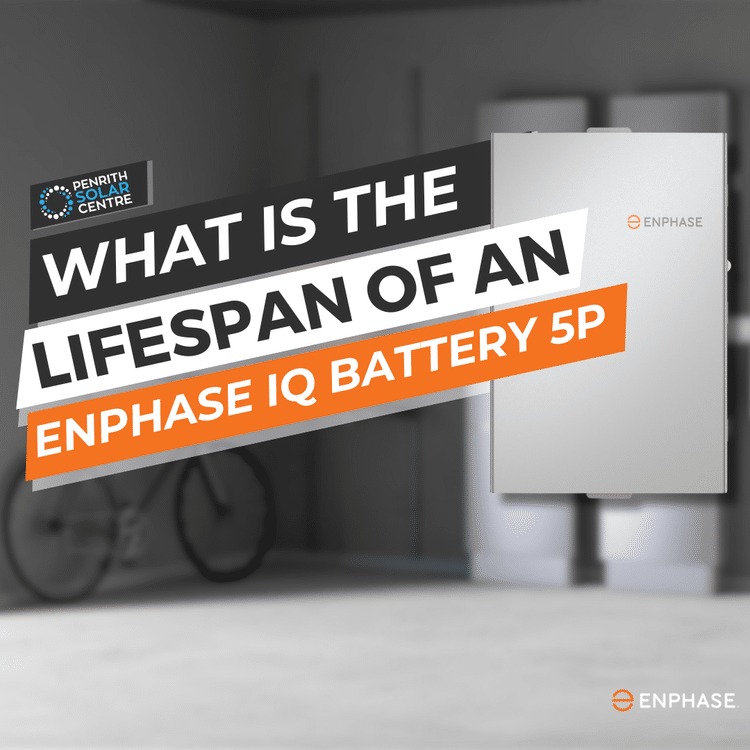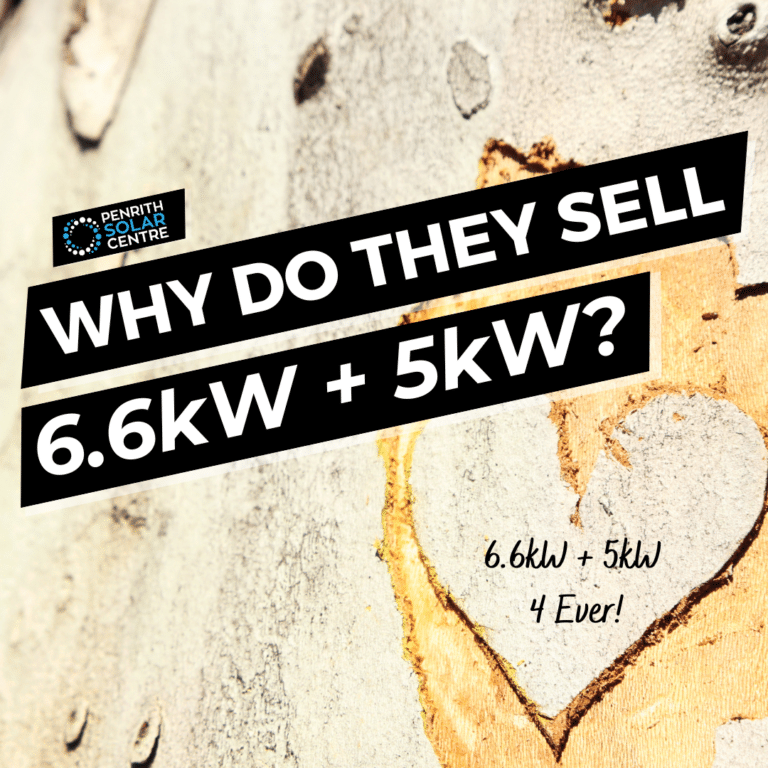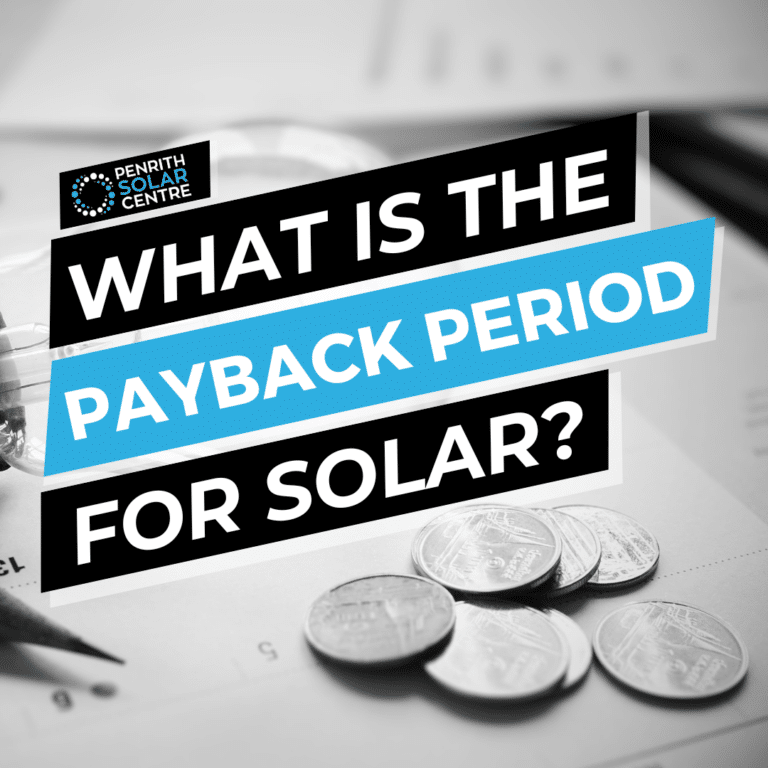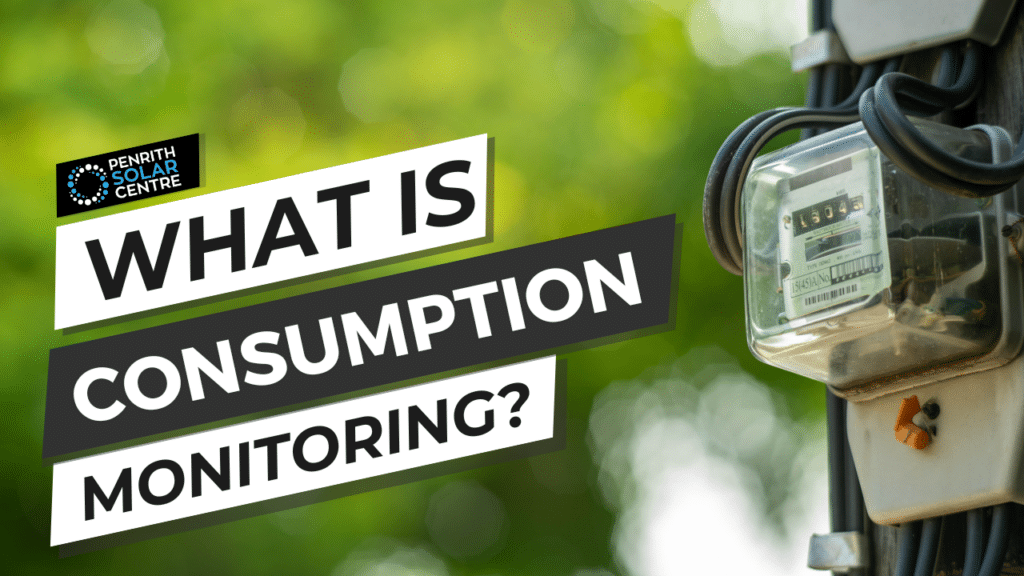
As you search the internet for information about solar, you have probably come across the term “consumption monitoring.” It’s one of those phrases that rolls off the tongue easily and honestly sounds like an add-on feature a salesperson might champion to make a little extra commission.
Consumption monitoring is the single most important thing to incorporate into your new solar system.
But what is it? How does it work? Why should you embrace it?
At Penrith Solar Centre, we’re committed to showing you how to get the most out of your solar system. We work with customers to set up consumption monitoring solutions whenever it’s possible and show you how to use them.
In this article, you will learn:
- What is Consumption Monitoring?
- How Does Consumption Monitoring Work?
- Why Do You Need Consumption Monitoring?
By the end of this article, you’ll understand the importance of consumption monitoring and why you’ll want to talk to your solar installer about it.
What is Consumption Monitoring?
Consumption monitoring is considered by many in the solar industry to be an optional feature on many solar systems. It’s a combination of software and hardware that tracks how much electricity you use in your home. It tells you when and how much electricity you use. Everyone uses electricity differently, so your patterns may not be the same as your neighbour’s.
Consumption monitoring lets you see your usage patterns so you can make changes. This information can be applied to maximise your solar efficiency.
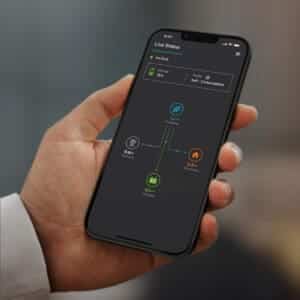
You might have heard of consumption monitoring referred to as consumption metering. These terms are largely interchangeable, but one refers to software (consumption monitoring) and the other refers to hardware that needs to be installed to enable the monitoring (consumption metering).
What do consumption monitoring solutions… well, monitor?
Solar Production: As part of your newly installed solar system, the consumption monitoring system is designed to track how much electricity your solar panels are producing. It will tell you if the system is producing what’s expected or if it’s underperforming.
Energy Needs for Your Home: A consumption monitoring system will also report back to you how much electricity you use. It should also tell you how much electricity you are exporting (selling for a feed-in tariff) back to the electrical grid and how much you are importing (buying). This is done through hardware and a consumption meter. The software cannot give you information without the hardware tracking it for you.
If you’re on a time-of-use rate schedule, you pay more for electricity during peak hours. Typically, for residential customers, peak hours are in the early to mid-evening when people are back from work and at home. Knowing you pay more in the evening; you can choose to use electricity earlier in the day before work or when solar production is high (or invest in a solar battery). This is one of many examples of how you can use consumption monitoring to make choices about your electricity usage.
The type of consumption monitoring your system will need to set up depends on the type of solar system you’re installing. Whether it’s a microinverter system or a string inverter system will dictate which software and hardware you’ll use, and if you’ve purchased a battery, you’ll have consumption monitoring software included along with consumption metering within the battery.
Enquire about solar batteries!
How Does Consumption Monitoring Work?
How consumption monitoring works for your unique needs depends on what type of solar system you’ve had installed. The software will be different from one brand to another. It will also differ depending on whether you have a microinverter system or a string inverter system.
The consumption metering will also be different depending on what type of hardware you have installed.
Solar With a Battery: Solar batteries must have consumption monitoring. It’s just part of the software and hardware that makes the battery function. The consumption monitoring system tells the battery when to charge and discharge, its primary function.
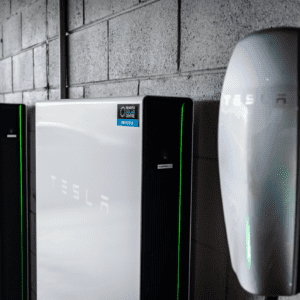
Consumption monitoring will read what solar is coming down from the solar panels and where it needs to go. For instance, supplying all the loads in the home. It also monitors what electricity is coming to the home from the grid. It has a live algorithm that reads and adjusts to this information.
If your solar is producing 10kW (kilowatts) and 5kW is being exported back to the grid for a feed-in tariff, the consumption monitoring software will direct the battery to charge with the additional 5kW.
The goal of consumption monitoring with battery storage is to keep the net activity of the smart meter at zero. You don’t want to be selling energy, but you also don’t want to be buying energy. Your solar is maximising its efficiency when the smart meter is at zero, neither buying nor selling. You want to store the excess energy without drawing from the grid, and then once the solar panels stop producing electricity for the day, you want to use the battery energy before importing from the electric grid for a price.
If you’re interested in learning more about how a solar battery will interact with your solar system, you might want to check out the following article titled, Enphase IQ Battery 5P Review.
Microinverter Solar Systems: It’s easy to set up consumption monitoring with a microinverter solar system. When you have a microinverter solar system installed, and in Australia, it’s going to be an Enphase system because they’re the only company in this market, the consumption metering is going to be installed as part of the system.
Every Enphase microinverter system comes with consumption monitoring installed and ready to go. The Enphase Envoy is a piece of technology that goes in the iBoard that’s installed as part of the system. The Envoy is the brain of the microinverter solar system and it is a little supercomputer that monitors the microinverters, the grid, and if you have a battery installed, it monitors that too.
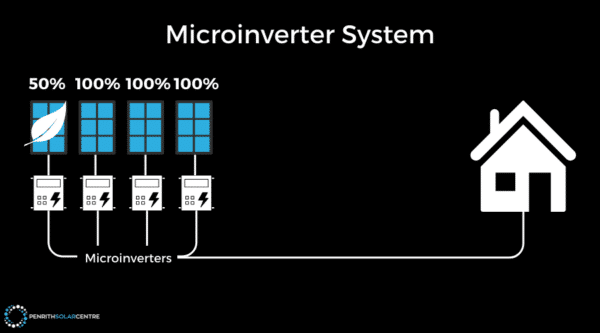
When the Envoy (housed within the iBoard) is installed, the installer wires 3 CTs (current transformers) into the Envoy. The CTs clamp around the cables that the electrical current travels through and tells the Envoy what that cable is doing. Where does the electrical current running through it come from or go to? The CTs tell the Envoy this information.
Because this is a standard part of the installation of a microinverter solar system, setting up the consumption monitoring system is really just about showing customers how to use the app.
If you’re interested in learning more about how microinverter systems work, you might want to check out the following article titled, What Are the Benefits of a Microinverter System?
String Inverter Solar Systems: When you buy a string inverter solar system, the consumption monitoring isn’t built in. It needs to be installed. There’s additional equipment required and it’s different from one string inverter company to another.
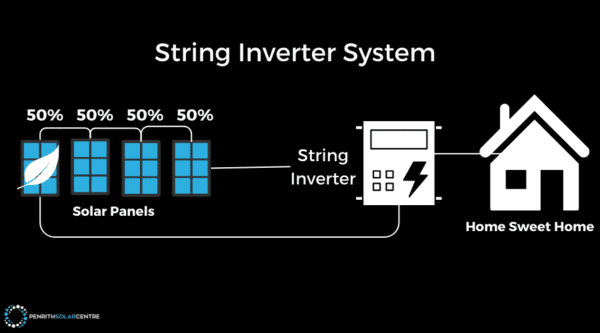
And to make it extra confusing, that piece of equipment is sometimes called a “smart meter.” This is not to be confused with the smart meters your electricity distributor installs to monitor your usage. If that wasn’t confusing enough, both smart meters are installed in the main switchboard.
The type of consumption metering equipment that needs to be installed in order to set up your consumption monitoring will vary based on whether your home is single-phase or three-phase. A single-phase home will require a smaller piece of equipment that’s smaller than the monitor for a three-phase home. The single-phase metering will be less expensive than the three-phase ones.
Installing consumption metering in a string inverter solar system is challenging for installers because of how labour-intensive it is. They have to unwire the main switchboard and tap the metering equipment into the circuits. There’s also the issue of running the data cable from the meter back to the string inverter.
The monitoring platform (the software) will be different depending on who manufactured your string inverter.
The hassle of installing consumption monitoring in addition to the cost of it keeps most installers from adding this feature to a solar system. Most customers don’t really care about it either (though many don’t know that this feature exists), having just purchased a 6.6kW string system for $4,000. It’s cheap, as cheap as it can possibly be. Obviously, it lacks consumption monitoring. This is unfortunate for many reasons, all of which we’ll address in the next section.
If you’re interested in learning more about consumption monitoring in string systems versus microinverter systems, you might want to check out the following article titled, String Inverters vs Microinverters vs DC Optimiser: How Are They Different?
Why Do You Need Consumption Monitoring?
Consumption monitoring tells you if your solar system is underperforming. If you have a microinverter system, consumption monitoring will inform you when an individual panel’s performance drops. It can tell you all kinds of information about your panels, including how the direction and angle of the roof are affecting performance.
Consumption monitoring keeps track of how the different components of a solar system are performing. A central point of failure like a string inverter is a concern in some systems and needs to be functioning at optimal capacity. Solar panels gradually lose efficiency over time. A monitoring system makes sure every part of your solar system is functioning efficiently.
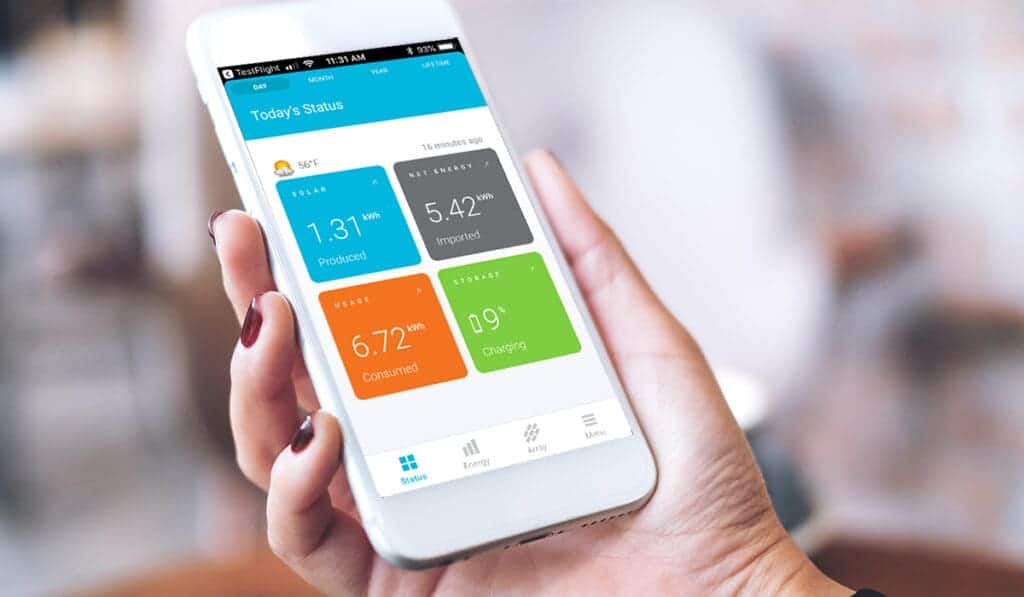
Consumption monitoring also gives you information about repairs. A good system will inform you whenever any part of your solar is malfunctioning. If you have a problem with your string inverter (if you have a string system) and it shuts down, you might not notice for an entire quarter. The only way you’d discover your system is faulty would be when you receive a huge electric bill.
Solar systems, regardless of the kind of system you invest in, are robust and durable. However, there are many factors that a monitoring system can keep track of to make sure your system is running at optimal efficiency. There are issues like the gradual degradation of the equipment during its lifetime or the more urgent threat of weather damage.
Panel-level monitoring is available in microinverter systems or string inverter systems with DC optimisers.
To make the most out of your solar system, you’ll need to understand how and when your household uses electricity. With the cost of electricity constantly rising, you’ll want to optimise your solar output.
According to data from Ausgrid taken from 8,000 households, around 51.8% of those solar systems are not performing as they should. Without consumption monitoring, you might be part of this statistic and not even know it.
Consumption monitoring also makes your solar system safer. The monitoring system can detect when equipment is close to failure or is about to break down (which we mentioned). When equipment is close to failure or only partially working, it’s more likely to malfunction and possibly lead to voltage arcing. This can start fires in your roof.
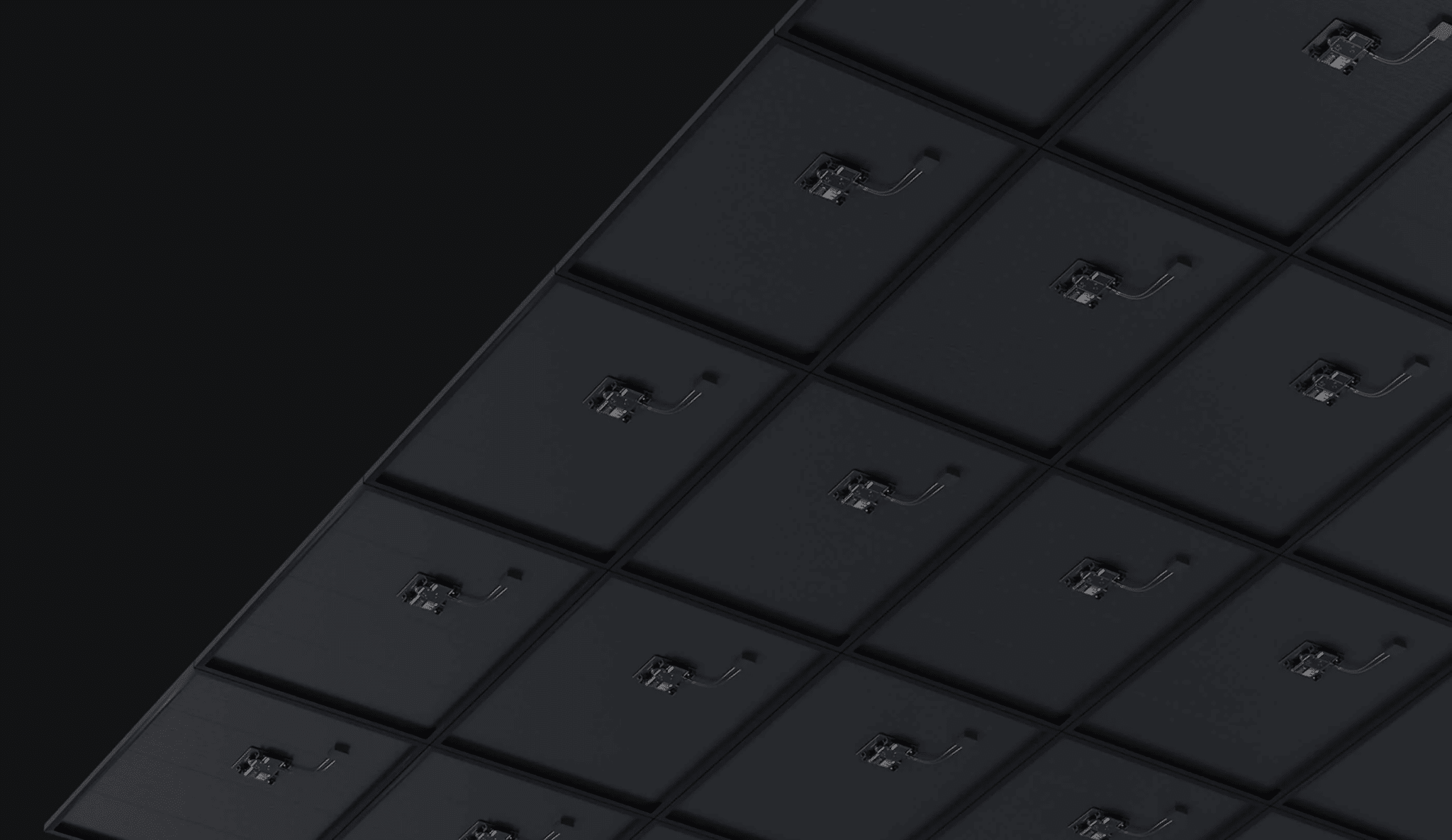
If you’re interested in learning more about safety and solar systems, you might want to check out the following article titled, What Are the Benefits of a Microinverter System?
Finally, a good consumption monitoring system will help you understand why your bill increases or decreases over time. This information can help you figure out who to choose from when you’re shopping for an energy retailer. It tracks your usage; which you can use to compare feed-in tariffs or peak usage prices.
If you’re interested in improving your home’s energy efficiency, you’ll want to consider a monitoring system to help you save money and energy.
Maximising Solar Savings with Consumption Monitoring
There are a lot of factors to consider when it comes to installing a solar system and consumption monitoring is crucial if you want to maximise your solar efficiency.
It’s a complex combination of software and hardware working together with information from the solar on the roof, the electricity used in the home, and what’s coming in from (or going out to) the grid. Without consumption monitoring and keeping track of all this, you risk your solar system underperforming or even malfunctioning without your knowing.
At Penrith Solar Centre, we install systems with consumption monitoring included. We feel it’s critical to ensure you get the most out of your solar system. Once it’s all set up as the final sets of your installation, you’ll be empowered with choices about your electricity and your usage patterns. Your savings – with this information – will be in your hands.
If you’re interested in learning more about the cost of solar in relation to efficiency, you might want to check out the following article titled, How Much Does a Microinverter Solar System Cost?
